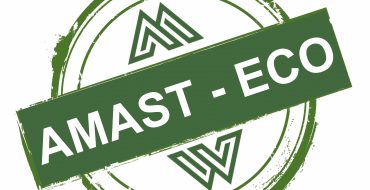
“Understanding the difference in Sustainability Metrics”
By Abigail Knopps and Christina Tsoucalas
As sustainability grows in popularity across the globe, various metrics have been created to assess and quantify the social, economic, and environmental impacts of new and existing products and buildings. The most common of these metrics – LEED – symbolizes sustainability achievement and leadership worldwide. And it is why, here at AMAST, we choose to base our eco-rating on similar standards.
What is LEED:
Leadership in Energy and Environmental Design or LEED is a green building rating system used worldwide verifying that buildings were designed and built with sustainability in mind.
Developed by the U.S Green Building Council (USGBC) LEED addresses key aspects of green buildings by focusing on nine basic areas:
- Integrative Process
- Location and Transportation
- Sustainability Sites
- Water Efficiency
- Energy and Atmosphere
- Materials and Resources
- Indoor Environmental Quality
- Innovation
- Regional Priority
Why is it important?
Over the last two decades, LEED has evolved from simply addressing reduced carbon emissions as well as climate change and the impact on human health, to becoming the world’s leading green building program that analyzes maximizing efficiency in resources used in building design.
What makes LEED transformative is its ability to incorporate real-time feedback as well as being fundamentally inclusive and adaptive. LEED for Building Design and Construction (LEED BD+C) and LEED v4.1 incorporate an accessible rating system that transforms the market by placing a carbon metric to new and existing buildings, raising the energy reference standard for new construction.
It is clear – the future involves the integration of energy efficiency. LEED pioneers this by also giving green building communities a chance to achieve LEED Zero status. LEED Zero is a certification that highlights net zero carbon and/or net-zero energy, net-zero water, and net-zero waste.
LEED is adaptive by also incorporating recertification, whether projects were past, present, or future, buildings have a chance to compile twelve months of data to achieve different levels of LEED certifications – which last for three years. This allows for projects to meet ever-changing climate goals by staying intertwined with the demand of the market.
Quick Facts
- LEED-certified buildings save money by reducing utility bills in the long run. Between 2015 and 2018, LEED-certified buildings saw:
- 1.2 billion in energy savings
- 715.3 million in maintenance savings
- 149.5 million in water savings
- 54.2 million in waste savings
- Employers in LEED-certified buildings see higher recruitment, retention rates, and productivity from their employees.
- Based on current trends, 540 million tons of waste will be diverted from landfills by 2030.
- Vacancy rates are estimated at 4% lower than non-green buildings
Different types of LEED Certifications:
Through the 9 basic areas, new projects and existing buildings can earn LEED certification points by incorporating sustainable designs and materials into their construction. To determine which certification your building achieves, 3 fundamental elements must be considered: prerequisites, credits, and points.
Prerequisites are essentially the building blocks of the certifications in that project managers will decide which LEED rating system they want to pursue and confirm that their building meets the minimum requirements to achieve certification.
Credits incorporate all other aspects of the build. Project managers can decide which credits they want to pursue from within the rating system they chose (so long as it aligns with the project) to earn points that determine the level of certification the project receives. The more points, the higher the certification.
- Certified (40-49 points)
- Silver (50-59 points)
- Gold (60-79 points)
- Platinum (80+ points)
What does the AMAST Eco-Rating mean?
AMAST has developed an innovative sustainability assessment tool that rates products based on the parameters such as energy efficient, low in embodied carbon, recycled content, reduced packaging, and low toxicity. Similarly to the materials and resources section of LEED certification, AMAST is focused on providing ratings for environmentally preferable products.
The goal of the AMAST eco-rating is to inform the purchasing decisions of buyers and encourage the purchase of sustainable and environmentally friendly materials. In the long run, we hope to make eco-materials as easily accessible as other products for the buyers and ultimately create more demand for them. AMAST eco-rating does not claim to certify the products but has been developed by sustainability professionals to give a complete picture of the environmental impact of a product.